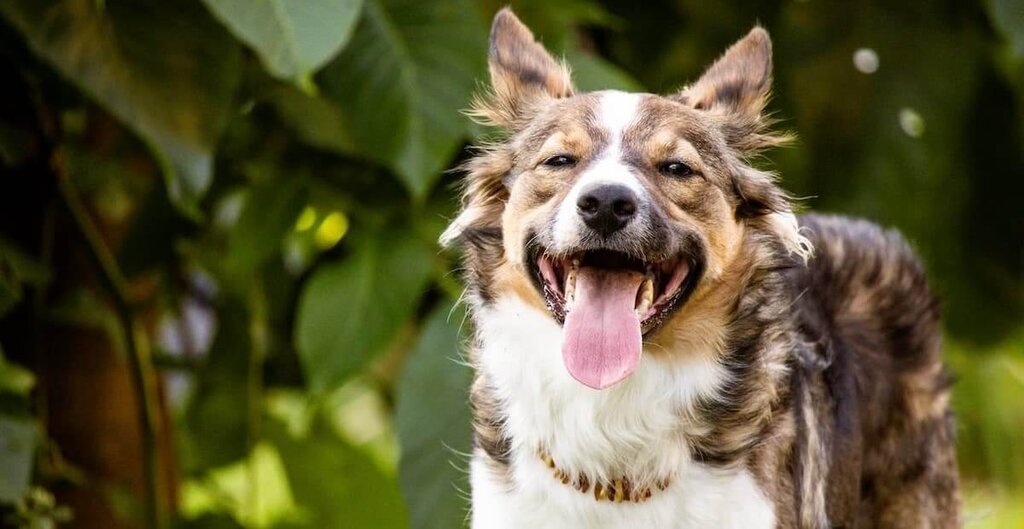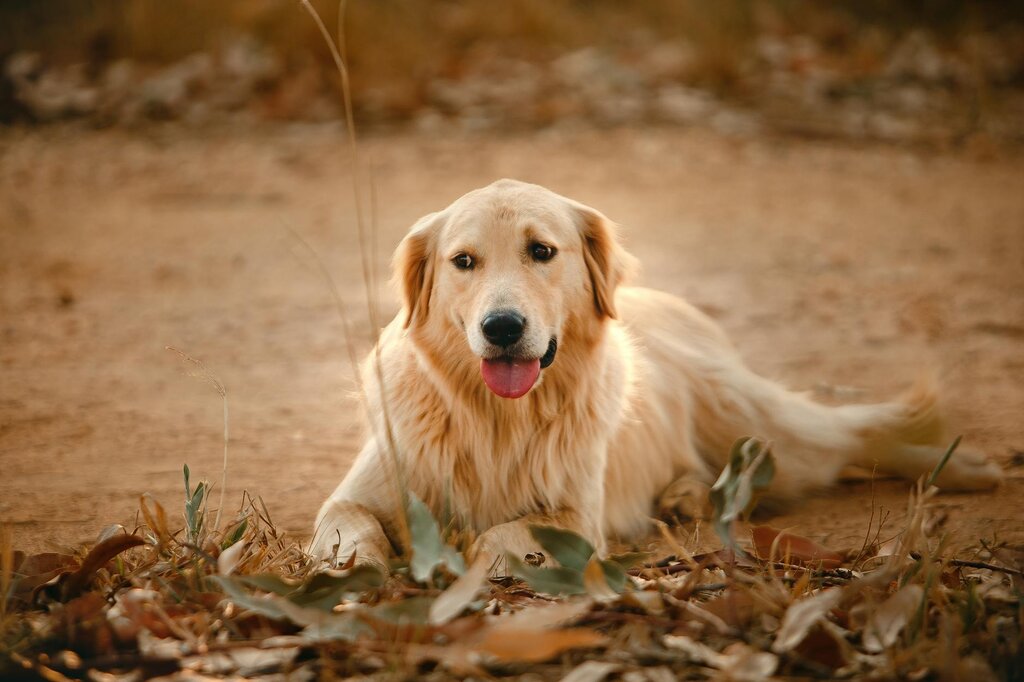Last Updated: 28/05/2025
Is Grain Free Food Better for Dogs?
A guide to grain free dog food, and vet recommended grain-free brands.
Author: Dr Kim Chainey BVSc
Reading Time: 31 minutes - long read
Just like in human diets, grain-free dog food has become a major trend in the pet food world, with countless brands and types now available. But is grain-free actually better for your dog? And how do you pick the right one? Let's explore these questions!
What is a grain free dog food?
Grain-free dog food is a diet that excludes cereal grains like wheat, corn, rice, oats, barley, and rye, opting instead for alternative carbohydrate sources such as potatoes, peas, lentils, tapioca, or chickpeas. These formulas often prioritise animal protein and became popular, in part, due to a perception of health benefits and as an option for dogs with suspected grain sensitivities, though true grain allergies are relatively uncommon.
While grain-free foods are generally nutritionally balanced, it's important to note that most dogs can digest grains effectively, and grains can confer some significant benefits.
Don't be tricked into the marketing of grains as 'filler' ingredients. Grains contribute valuable nutrients including vitamins, minerals, fatty acids and fibre to the diet. At the same time, they help to keep the fat and calorie content lower than if animal products were used in their place. If we decide to feed a grain free diet, we need to ensure we can still provide these key nutrients or 'building blocks' that make up a complete and balanced diet.
For more information about the benefits of grains in a dog's diet, read through our Facts About Grain Diets.
Benefits of Grain Free Diets

There are several arguments put forward by advocates of the grain-free movement, and we'll explore them below.
Grain free diets more closely replicate a natural diet
One big argument put forward by fans of the grain free movement is that as carnivorous animals, grains hold no place in the natural diet for dogs and cats. While cats are obligate carnivores, meaning they must eat meat, technically domestic dogs are omnivores. Dogs have lived alongside humans for tens of thousands of years eating our scraps and cast offs, including meats, vegetables and you guessed it - grains! If we compare the genome of a dog to a wolf, it's been shown that dogs do have the ability to digest the starches found in grains. In fact, a microbiology researcher in 2012 found that dogs have multiple copies of the gene coding for the digestive enzyme, amylase, which is synthesised by the pancreas. While dogs can have anywhere from 4 to 30 copies of this gene, wolves only have 2 indicating a reduced ability to digest starch. While their distant relative may be the wolf, the domestic dog's digestive system has undoubtedly changed a lot since then.
This comes down to the distinction between nutrients and ingredients. Cooked grains such as rice and corn contain valuable nutrients such as proteins, carbohydrates, vitamins, minerals, fatty acids and fibre which, believe it or not, are very beneficial and able to be absorbed and utilised by both cats and dogs. So it's not all about the ingredient, for example wheat, but instead the nutritional benefit that that ingredient provides.
While the quality and type of ingredients used in your pet's food certainly matter, it's the nutrients contained within these ingredients that your pet will use to fuel their bodies.
Grain free diets may be beneficial for food allergies
The second argument put forward in favour of grain free diets is that they often manufactured with a holistic focus and can include nutraceutical ingredients and superfoods that could offer additional beneficial nutrients. Although not suitable for use as a blanket hypoallergenic diet for dogs, grain free diets may be suitable for dogs with allergies to grain based proteins such as wheat and corn.
Keep in mind that grain allergies in pets are extremely uncommon, and it's far more likely for dogs and cats to be allergic to the protein source within the food. While many parents do report that their pets skin and/or digestive symptoms improved when they were switched onto a grain free diet, we don't know whether this was because the diet was free of grains, or simply because the protein source was different. It's common for manufacturers of grain free diets to select exotic and 'novel' protein sources such as bison, lamb and kangaroo. Because it's relatively unlikely for pets to be allergic to these new and exotic protein sources, switching pets to one of these grain free diets may lead us to believe that the grains were the culprit.
Want to learn more about food allergies and how to manage them? Check out our top two recommended articles:
What are the drawbacks of a grain free diet?

More expensive
Grain-free dog foods often come with a higher price tag, primarily because they necessitate the use of less cost-effective carbohydrate sources like sweet potato or tapioca flour as substitutes for traditional grains. While grains such as corn and wheat are typically more affordable ingredients, grain-free formulations rely on these pricier alternatives to provide the necessary carbohydrates for energy, ultimately contributing to the increased cost for consumers seeking grain-free options for their pets.
Less nutritionally beneficial carbohydrate sources
While carbohydrate alternatives are essential in grain-free dog foods, they can sometimes fall short in providing the same spectrum of beneficial nutrients found in traditional grains. For instance, brown rice stands out as an excellent source of dietary fibre, which is crucial for healthy digestion and provides a sustained release of energy, helping to regulate blood sugar levels. In contrast, a common carbohydrate alternative like tapioca flour is primarily composed of starch and contains virtually no fibre, offering minimal nutritional value beyond readily available calories. This disparity highlights how the shift away from grains can inadvertently reduce the fibre content and potentially other beneficial nutrients in a dog's diet, depending on the specific carbohydrate replacements chosen.
More energy dense
Due to the potentially higher fat or readily digestible carbohydrate content often found in grain-free dog foods, these diets can be more energy-dense compared to traditional formulas. This increased caloric concentration means that a smaller volume of food can provide the same, or even more, energy. Consequently, pet owners feeding grain-free diets must pay particularly close attention to recommended feeding amounts and carefully monitor their dog's body condition to avoid overfeeding, which can easily lead to unwanted weight gain and ultimately contribute to the development of obesity and associated health problems.
Does Grain Free Food Cause Heart Disease?

In the last few years, veterinary cardiologists in the United States reported increased rates of a deadly heart condition, dilated cardiomyopathy (DCM), in Golden Retrievers and breeds which are not typically predisposed to DCM. Frequently these dogs were noted as being fed 'boutique, exotic or grain free' diets, or BEG diets for short.
At this stage, research is still ongoing and it is unclear as to the underlying cause of the reported cases of diet related DCM. Some possible theories include nutritional imbalances in the foods themselves, unknown effects of certain exotic ingredients such as legumes, fruits, flaxseeds etc, or even potentially an unknown toxin.
For pet parents concerned about nutritional deficiencies, feeding a rotational diet may help. A rotational diet offers a your dog with some variety while also reducing the risk of a deficiency developing from feeding a particular diet over an extended period of time. Rotational feeding involves offering your dog a combination of high quality diets, ideally varying protein sources and formats (eg. dry, freeze and air dried, wet). For more information, take a read through Rotational Diets for Dogs.
For further information, take a read through our article Does Grain Free Dog Food Cause Heart Disease?
What should you look for in a grain free food?
While many grain free foods are nutritious and balanced, they are not all created equal. When looking for a grain free food for your pet it is important to critically evaluate the ingredients and nutrients that it provides. For more information about the ingredients in pet foods and how to read labels, take a read through Pet Food Ingredients and How to Read Pet Food Labels.
Your choice of food will also depend on your dog's life stage, and any other conditions which impact your dog's nutritional needs, including weight management and food allergies.
For more information, take a read through the What is the Best Grain Free Dog Food?
Top recommended grain-free brands
While grain-free dog food has gained considerable popularity, driven by trends in human nutrition and perceptions of enhanced health benefits, it's crucial for pet owners to approach this dietary choice with informed consideration. While these formulas cater to specific dietary restrictions and preferences, they often come with a higher cost due to the use of less economical carbohydrate sources. Furthermore, the carbohydrate alternatives employed may not always offer the same rich profile of beneficial nutrients, particularly fibre, as traditional grains like brown rice. Additionally, the potentially higher energy density of grain-free options necessitates careful monitoring of feeding amounts to prevent weight gain and obesity. Ultimately, the decision of whether or not to feed a dog a grain-free diet should not be based solely on marketing trends but rather on a thorough understanding of the dog's individual needs, health status, and, most importantly, in consultation with a veterinarian who can provide tailored guidance and ensure the chosen diet is nutritionally complete and appropriate for long-term health and well-being.
Further Reading
Want to know more? Take a look at our other articles:
Premium Pet Food: Is it Worth it?
History
Our experts continually monitor the health and wellness space and we update our articles when new information becomes available.
Thu Feb 6 2020
Written by Dr Kim Chainey BVScDr Kim Chainey BVSc
Contributing Author, BVSc
Kimberley graduated from James Cook University in 2012 and initially worked in a mixed animal practice on the Atherton Tablelands for two years. Her interest in small animal medicine led her to undertake a rotating internship at Veterinary Specialist Services in Brisbane. Since then, she has worked in small animal clinics throughout south east QLD and NSW! She is passionate about providing the best quality of care to all animals that walk through the door

